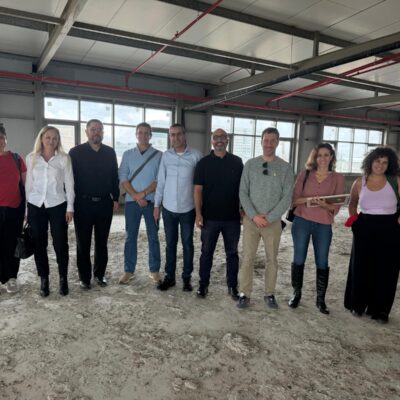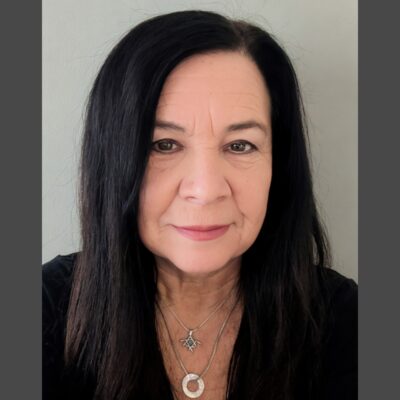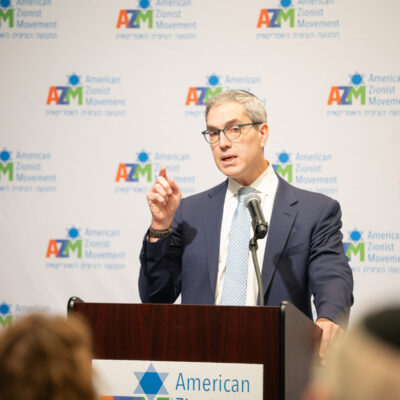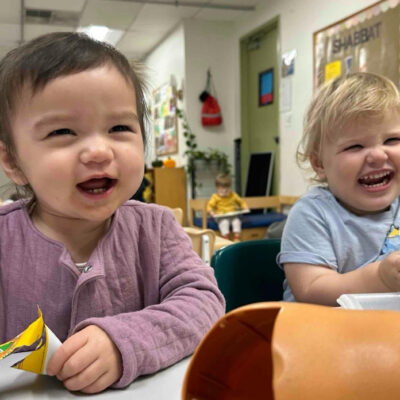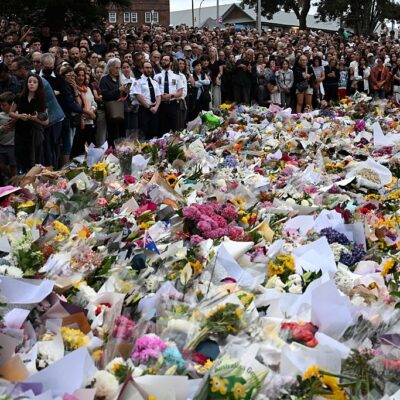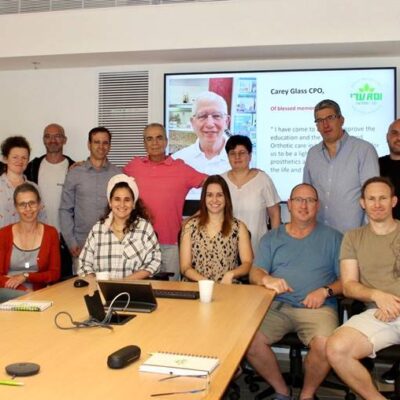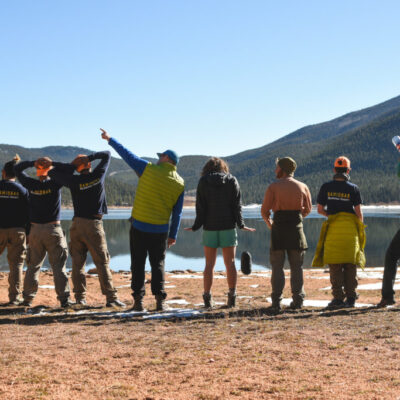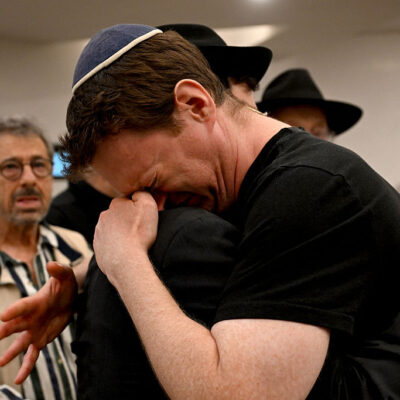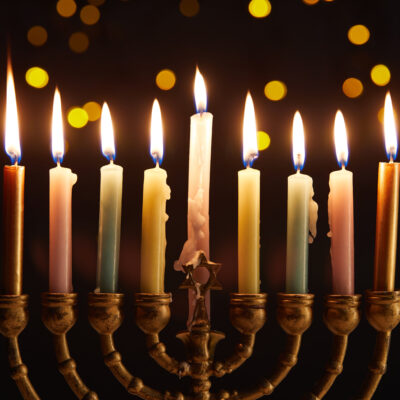WAKE-UP CALL
M² survey finds Jewish professionals lack hope, fear internal division, but believe in their work
In its first-ever ‘Hope Study,' the education group expected to come away buoyed by the results, which were instead ‘a reckoning’
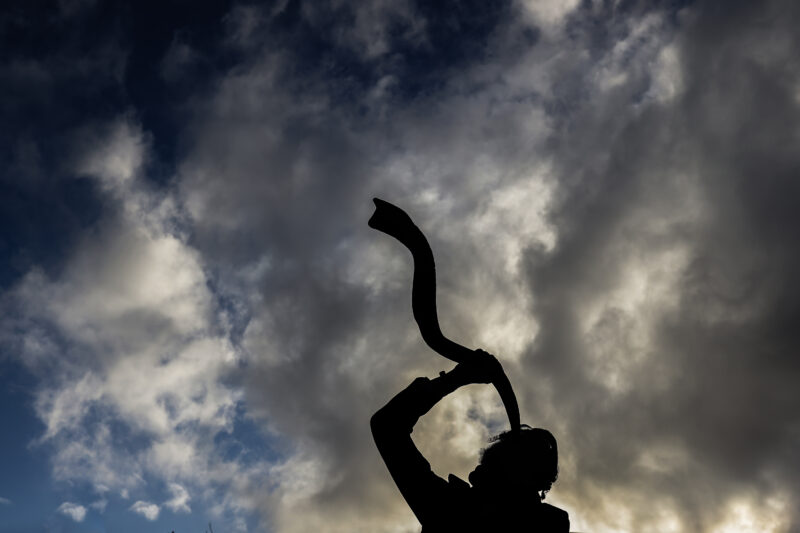
David Cohen/Flash90
A Jewish man blows a shofar at the Rashbi gravesite in Meron, Israel, on Dec, 1, 2021.
M²: The Institute for Experiential Jewish Education wanted to give the Jewish world a gift for the new year. This summer, it surveyed 950 North American Jewish communal professionals about what gave them hope for the future, expecting the results to be inspirational, something positive to share with Rosh Hashanah less than one week away.
What they found was that many of these professionals don’t have much hope at all. Instead of a sweet gift of apples and honey, the results were a wake-up call, a jarring shofar blast.
Today, M² provided the findings of its first-ever Hope Study, showing that a small minority of Jewish communal professionals — 24% — “often” or “very often” feel hopeful about the future. This is in stark contrast to 82% of the general U.S. population that felt hopeful about their future, according to a 2024 study performed by the Human Flourishing Labs.
The M² results were collected at a pivotal time: after June’s Iran-Israel war but before the images of famine in Gaza flooded the news. If the data had been collected weeks later, the results probably would have been harsher, Shuki Taylor, founder and CEO of M², told eJewishPhilanthropy.
Though he hoped for more uplifting results, the findings about the lack of hope didn’t completely surprise him, Taylor said. He knew the situation was dire post-Oct. 7, with Israel at war in Gaza and antisemitism skyrocketing, but didn’t know it was this bad. The results were “a reckoning,” he said.
In an open-ended question, internal communal division was identified as the top professional challenge, followed by leadership failures and then antisemitism. One respondent said they were “watching our community tear itself apart.” This division has been heightening as the war in Gaza drags on, according to Taylor.
The 10-question survey did not define hope, instead it surveyed respondents on what values were associated with hope, where they found hope and how often they felt it. “Hope is a very broad idea which is understood very differently by people,” Clare Goldwater, chief strategy officer at M², told eJP.
The top values associated with hope were community, compassion, responsibility, courage and peace. “If there’s a sense of unity and we’re all on the same page, then we can withstand anything,” Taylor said, reflecting on the results. “But if internally we are divided, that really gets in the way and impedes our ability to do our work.”
Although the results seemed grim, the survey showed that Jewish professionals believed their work had impact: 55% of respondents said they often feel energized by their work, and 85% said that their most important source of hope was knowing the impact of their work on others. Nearly 75% said they feel strongly connected to the Jewish People, and 73% found hope in support from peers.
Because employees lack hope but find meaning in their work, there is a paradox, Taylor said, which is something the Jewish world has dealt with in the past.
“What got us through… in the first few months after Oct. 7, it wasn’t a sense of hope,” he said. “No one was feeling very good about the future. Everyone was grabbing onto ‘How can I make a difference?’… I don’t think that in the middle of the Holocaust people turned around and felt hopeful, but they were grabbing onto any act of humanity and kindness and decency and exercising their own humanity to help them move forward.”
But this paradox cannot last, he said. The study showed that 21% of respondents identified as being vulnerable at work and 10% said they were struggling.
When respondents said they struggled with internal communal division, they weren’t asking for help building bridges with others on the other size of the political spectrum, Taylor said, but wanted to allow room for the pain and doubt people that they were feeling.
“Even if your leadership stance is unequivocal about support to Israel, you have to be able to make space for conversations about where our doubts are,” Taylor said. “Because when you’re seeing certain types of reports [of the humanitarian crisis] versus an organizational line which seems to be ignoring that and putting that aside, it creates this dissonance.” Workplaces can hold their values, he said, while recognizing “how painful the moment is.”
The study offered recommendations, including building Jewish communal belonging through rituals and learning and helping staff recognize their impact. The report suggests, for instance, that organizations not simply provide reports of success to the board and funders, but also share results with the staff. “Your staff are as significant a stakeholder as your board and funders. You have to go to your staff and say, ‘Here is the return on your investment,’” Taylor said.
Another way to help staff members recognize their impact is to hold weekly meetings where employees share one thing they did to make a difference in the community, whether it be attaining funding for an initiative or helping someone feel at home in a new temple.
The respondents of the survey mirrored the makeup of the Jewish professional world, with 78% of respondents identifying as women, but only 7% of respondents worked in day schools due to summer vacation falling at the same time as the study was conducted.
Of the respondents who felt the most hope, executive-level professionals scored higher than their employees. Of the 17% of employees who identified themselves as thriving, the majority were men in executive roles. Even though they are in a better position emotionally, they are still struggling, Taylor said. “I don’t want any leader to walk away feeling even heavier, like I didn’t do enough [for my employees.] They are experiencing the same thing, and that needs to be recognized just as much.”
Even though the results of the survey weren’t upbeat, they still offer hope for the year ahead, Goldwater said.
“The people told us what they need us to do, and we can do those things,” she said. “Perhaps this is a way to offer some kind of pathway to sweetness.”

 Add EJP on Google
Add EJP on Google